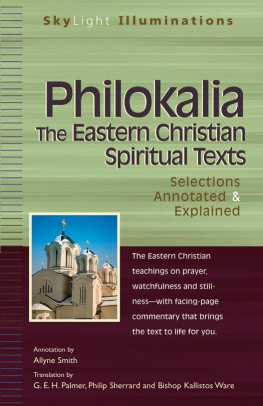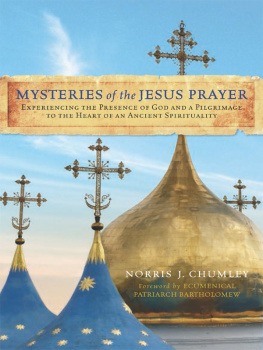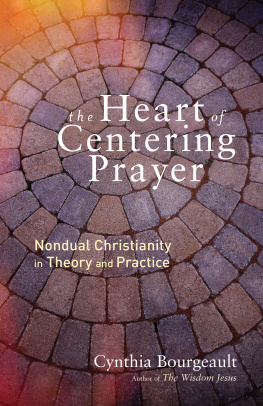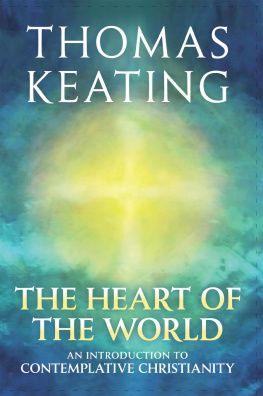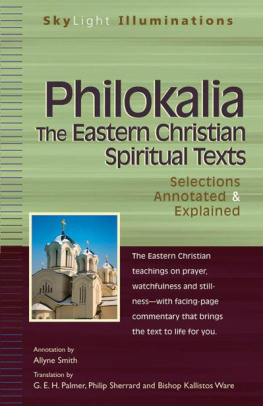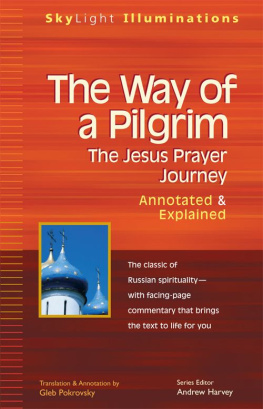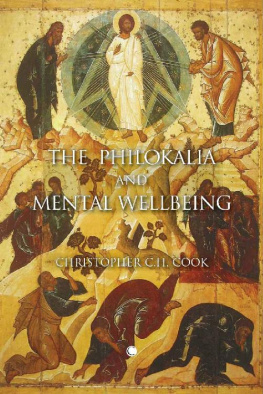

Thank you for purchasing this SkyLight Paths e-book!
Sign up for our e-newsletter to receive special offers and information on the latest new books and other great e-books from SkyLight Paths.
Sign Up Here
or visit us online to sign up at
www.skylightpaths.com .
Looking for an inspirational speaker for an upcoming event, conference or retreat?
SkyLight Paths authors are available to speak and teach on a variety of topics that educate and inspire. For more information about our authors who are available to speak to your group, visit or call us at (802) 457-4000.
For my parents,
who first taught me to love the beautiful
Contents
Sign Up for E-mail Updates
Send Us Your Feedback
Introduction
Virtually every spiritual tradition has an authoritative scripture or scriptures that serve as a foundational text for its beliefs, practices, and spirituality. For Christians, that collection of texts is the Holy Bible. But the fracturing of the Christian Church in the fifth century (following the Council of Chalcedon in 451), the eleventh century (the break between what came to be known as the Eastern Orthodox and Roman Catholic Churches), and the sixteenth century (the Protestant Reformation) has produced a dizzying variety of spiritual traditions. Each of these traditions in turn has its own set of subsidiary texts that serve as spiritual classics within the particular tradition. These secondary texts give expression to each traditions appropriation of the Bible. Each spiritual tradition reflects a lived interpretation of scripture.
For the Eastern Orthodox Churches, the principal spiritual text has come to be the Philokalia, an anthology of older texts edited by Nikodimos of the Holy Mountain (17491809) and Makarios of Corinth (17311805) and published in 1782. These monks of the Greek Orthodox Church collected sayings on prayer and spirituality from Eastern, mostly monastic writers that span more than a millennium, from the fourth to the fifteenth centuries. The Philokalia, more than any other text, reflects the Eastern Churchs interpretation of the Bibles meaning. In the anonymous nineteenth-century Russian classic The Way of a Pilgrim, the pilgrim asks a staretz, or spiritual father, whether the Philokalia is more exalted and holier than the Bible. The staretz answers:
No, it is not more exalted or holier than the Bible, but it contains enlightened explanations of what is mystically contained in the Bible, and it is so lofty that it is not easily comprehended by our shortsighted intellects. Let me give you an illustration. The sun is the greatest, the most resplendent and magnificent source of light, but you cannot contemplate or examine it with the simple naked eye. You would need to use a special viewing lens, which, though a million times smaller and dimmer than the sun, would enable you to study this magnificent source of all light and to endure and delight in its fiery rays. Thus the Holy Scriptures are like a brilliant sun, for which the Philokalia is the lens needed in order to view it.
Philokalia is a Greek word meaning love of the beautiful. Two of the Cappadocian Fathers, Gregory the Theologian (329389) and Basil the Great (c. 330379), edited a collection of the writings of Origen, the great third-century theologian of Alexandria, and gave it the title Philokalia. In subsequent centuries, other small works of monastic spirituality also took the same title. The full name of the present text is The Philokalia of the Neptic Saints gathered from our Holy Theophoric [God-bearing] Fathers, through which, by means of the philosophy of ascetic practice and contemplation, the intellect is purified, illumined, and made perfect a title that serves not only to distinguish it from the earlier collections but also calls attention to the importance of watchfulness (translating the Greek nepsis ) for the spiritual tradition represented in the work of Nikodimos and Makarios.
The Monks of Mount Athos
Nikodimos and Makarios were both monks of Mount Athos, an autonomous monastic republic located on a peninsula in northeastern Greece. It is generally regarded as the most important center of Orthodox monasticism. Although the first formal monasteries were founded in the tenth century, Athos had already attracted monks such as Peter the Athonite and Euthymios the Younger in the ninth century.
The contemplative tradition of the Holy Mountain (as Mount Athos is known in Greece) had reached its height in the fourteenth century, but by the seventeenth it had become prey to secularizing influences from the West. Realizing the danger to the authentic spiritual character of Mount Athos, the leaders of the Athonite monasteries sought to recover its true heritage. One leader in this was Nikodimos. Although best remembered for the Philokalia, he authored or translated over a hundred books on the spiritual life. Makarios, a fellow monk who later left the Holy Mountain to become archbishop of Corinth, aided him in the compilation of the Philokalia.
The Eastern Christian spiritual tradition is not composed of schools as in the West, where they are typically associated with a particular religious order (for example, Benedictine, Carmelite, or Franciscan). Yet there is more than one approach in the East. The one favored on Athos is known as hesychasm, from the Greek word hesychia, translated as stillness. It flourished especially in the fourteenth century on Athos, at a time when a controversy arose over the experience of God. An Italian monk named Barlaam was teaching in Constantinople and in Greece and, after visiting the monks on Mount Athos, he began challenging both the legitimacy of mental prayer and the Athonite belief that the monks experienced the uncreated light of Mount Tabor, that is, the light of the Transfiguration of Christ. Barlaam argued instead that the light was material and created. For the Athonites, this was tantamount to denying that the monks experienced God himself. Gregory Palamas (12961359), a monk of Athos and later archbishop of Thessaloniki, became the spokesman for the Holy Mountain. In his defense of their position, he reiterated the Eastern Christian distinction between the essence and energies of God. We cannot experience the essence of God, but we can experience Gods energies, that is, Gods actions in the world. These energiesincluding the Taboric lightare divine and uncreated. Thus we can experience God in Gods energies, and not simply something created outside of God.
Mount Athos continues to be the home of twenty monasteries and at least a dozen sketes (smaller communities of monks). Only monks may live on Athos, and female visitors are not permitted. About two thousand monks live on Athos today. While the great number of visitors to the Holy Mountain can become a distraction for the monks, they nonetheless seek to maintain the silent character of their life. John Chryssavgis in his recent book Light through Darkness: The Orthodox Tradition describes their typical daily schedule:
A bell rings in the silence of the night at about midnight, calling monks to silent prayer and study. A wooden gong sounds at 4 a.m., inviting monks to worship (Matins and Liturgy, normally on a daily basis) in the silence of the night. The monks proceed silently to the refectory, where lunch follows in silence at 8:00 a.m. There is a brief period of rest and quiet. From 10:00 a.m. to 4:00 p.m., the monks work in silence. Vespers is at 5:00 p.m. The evening meal, again in silence, is at 6:00 p.m. There may follow a spell of relaxation from work and silence, when monks mingle with one another or with visitors on the balconies. Compline in the main church is held at 7:00 p.m. Afterwards the monks retire in complete silence to their cells.
Next page
